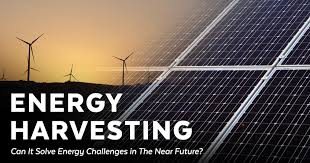Introduction
In today’s world, where energy demand is continuously increasing, innovative methods of power generation are essential. One such approach is energy harvesting, which involves capturing and converting ambient energy from everyday movements into usable electricity. This sustainable and decentralized energy source has the potential to power small electronic devices, wearable technology, and even large-scale infrastructure projects.
What is Energy Harvesting?
Energy harvesting, also known as energy scavenging, is the process of converting mechanical, thermal, or kinetic energy from the environment into electrical energy. Unlike conventional power generation, which relies on large power plants, energy harvesting utilizes small, localized sources such as human motion, vibrations, temperature changes, and even radio frequency (RF) waves.
Sources of Energy Harvesting from Movements
- Piezoelectric Energy Harvesting
- Piezoelectric materials generate electricity when subjected to mechanical stress or vibrations.
- Commonly used in wearable electronics, pressure sensors, and smart textiles.
- Example: Footstep-powered flooring that generates electricity in crowded places like train stations.
- Electromagnetic Induction
- Works on the principle of Faraday’s Law, where a changing magnetic field induces an electric current in a coil.
- Used in self-powered wristwatches and bicycles with dynamo-powered lights.
- Example: Kinetic-powered smartwatches that charge as the wearer moves.
- Triboelectric Energy Harvesting
- Based on the triboelectric effect, where friction between different materials generates static electricity.
- Can be integrated into shoes, clothing, and touch-sensitive surfaces.
- Example: Triboelectric nanogenerators (TENGs) embedded in clothing to charge mobile devices.
- Human Body Heat Conversion
- Uses thermoelectric generators (TEGs) to convert body heat into electricity via the Seebeck effect.
- Common in wearable health-monitoring devices and smart textiles.
- Example: Smart wristbands that generate power from body temperature differences.
Applications of Energy Harvesting
- Wearable Electronics: Smartwatches, fitness bands, and medical sensors that can function without external charging.
- Internet of Things (IoT) Devices: Self-powered sensors for smart homes and cities.
- Biomedical Devices: Pacemakers and glucose monitors that use body motion or heat to function.
- Smart Infrastructure: Energy-harvesting roads, bridges, and floors to generate power from pedestrian and vehicular movement.
Challenges and Future Prospects
While energy harvesting is promising, it faces challenges such as low energy output, efficiency limitations, and the need for durable materials. However, ongoing research in nanotechnology, material science, and circuit design is driving improvements. In the near future, advancements in energy storage, power management, and hybrid energy harvesting systems will make this technology even more viable for real-world applications.
Conclusion
Energy harvesting from everyday movements represents a sustainable and innovative solution for powering small-scale electronics and wearable technology. With continuous advancements, this technology could revolutionize energy consumption, making devices more independent and reducing reliance on traditional power sources.


